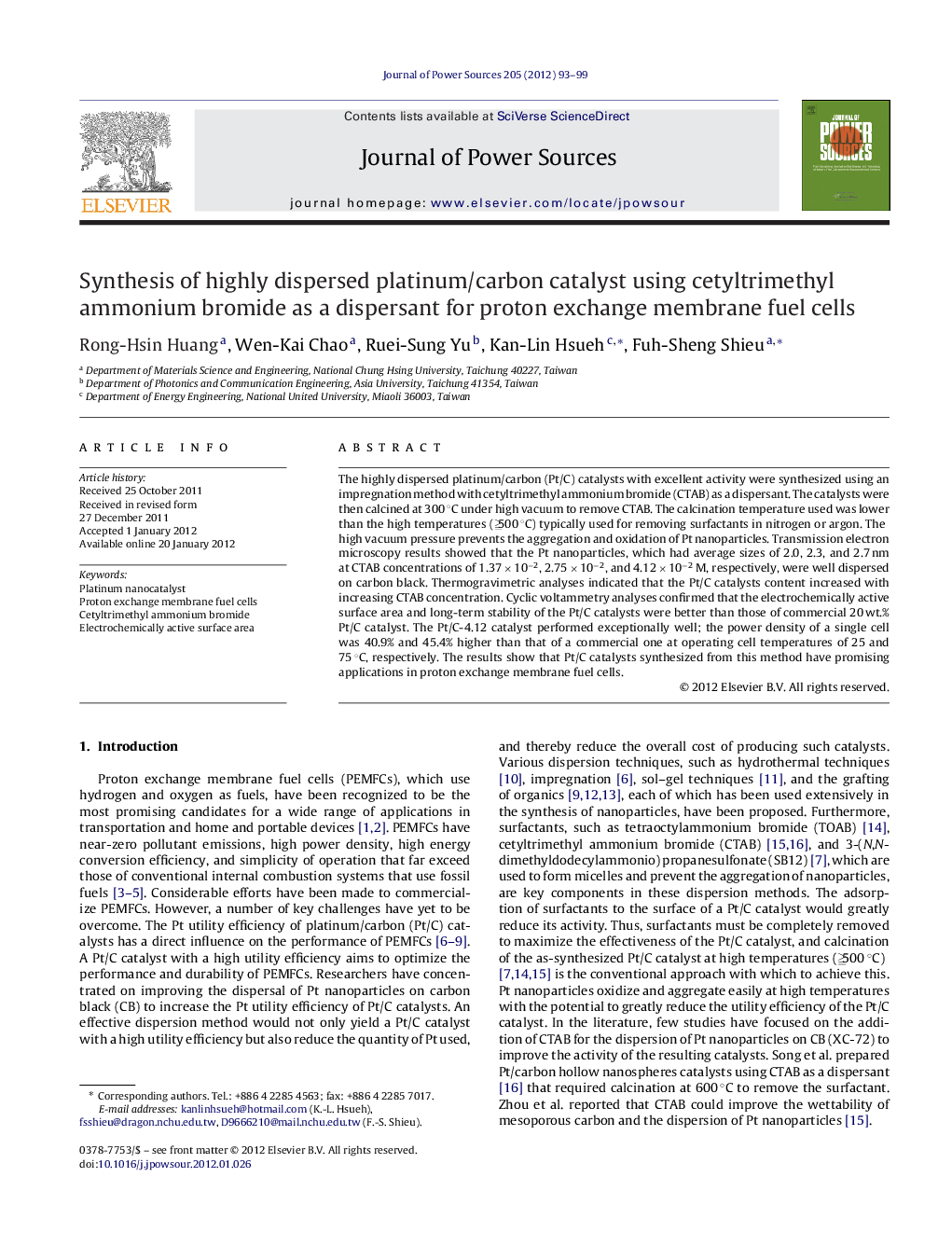| Article ID | Journal | Published Year | Pages | File Type |
|---|---|---|---|---|
| 1288118 | Journal of Power Sources | 2012 | 7 Pages |
The highly dispersed platinum/carbon (Pt/C) catalysts with excellent activity were synthesized using an impregnation method with cetyltrimethyl ammonium bromide (CTAB) as a dispersant. The catalysts were then calcined at 300 °C under high vacuum to remove CTAB. The calcination temperature used was lower than the high temperatures (≧500 °C) typically used for removing surfactants in nitrogen or argon. The high vacuum pressure prevents the aggregation and oxidation of Pt nanoparticles. Transmission electron microscopy results showed that the Pt nanoparticles, which had average sizes of 2.0, 2.3, and 2.7 nm at CTAB concentrations of 1.37 × 10−2, 2.75 × 10−2, and 4.12 × 10−2 M, respectively, were well dispersed on carbon black. Thermogravimetric analyses indicated that the Pt/C catalysts content increased with increasing CTAB concentration. Cyclic voltammetry analyses confirmed that the electrochemically active surface area and long-term stability of the Pt/C catalysts were better than those of commercial 20 wt.% Pt/C catalyst. The Pt/C-4.12 catalyst performed exceptionally well; the power density of a single cell was 40.9% and 45.4% higher than that of a commercial one at operating cell temperatures of 25 and 75 °C, respectively. The results show that Pt/C catalysts synthesized from this method have promising applications in proton exchange membrane fuel cells.
► CTAB quantity controlled the Pt content and size of the proposed Pt/C catalyst. ► At 300 °C, CTAB was removed from the Pt/C catalyst to improve catalyst activity. ► The electrochemical activity of Pt/C was better than that of a commercial catalyst. ► The Pt/C catalyst had long-term stability. ► The performance of homemade MEA-4.12 was 45.4% higher than that of a commercial MEA.
